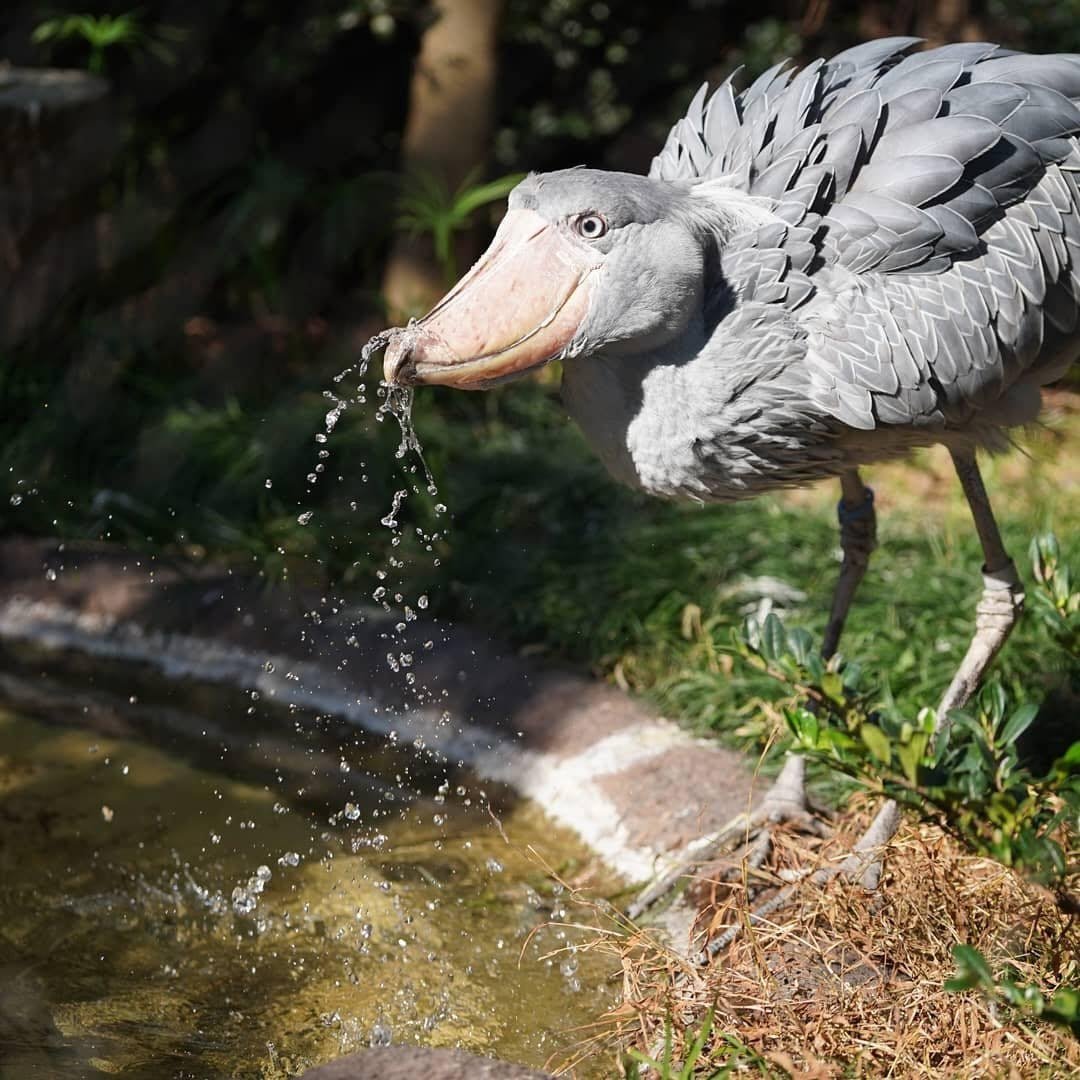
Shoebill Stork: Looks ugly but can eat antelopes and crocodiles
In the animal kingdom, after fish, birds are the second most numerous vertebrate species.
It seems like every country can find some bird species they’re proud of: Keas in New Zealand, ibis in China, and bald eagles in the United States.
And if you want to choose unique birds from Africa, some people probably immediately think of ostriches that can run fast.
Shoe-billed storks mainly live in African swamps. They have a brave appearance and large size, and are likened to dinosaurs in bird form.
Many people, when they first see a Shoebill stork, will feel that this bird is too ugly, but if you look for a long time, you will probably realize that this bird is not only ugly but also has an extremely dull appearance: it
Among birds, the shoe-billed stork is a relatively large species; adult birds can reach a height of about 1.6 meters.
Adult shoe-billed storks are usually pale white in color and often stand motionless in the water for an hour or two.
In addition, the shoe-billed stork is also a `star` in many zoos. It often bows to welcome tourists, sometimes plucking its own feathers and giving them to tourists when they are happy.

The shoe-billed stork’s most notable feature is its impressively large beak, which is spotted and about 0.12 meters wide.
This species often leans its giant beak against its chest, letting its chest bear part of the beak’s weight and waiting for prey to appear.
Currently, due to many reasons, the Shoebill stork population has decreased sharply. There are only about 5,300 wild Shoebill storks left in the world, and they all live in swamps with dense aquatic plants in central East Africa.
Compared to living in groups, shoe-billed storks prefer to live alone. They are typical nocturnal animals. During the day they often hide in the reeds and sleep, but at night they come out to look for food.

Shoe-billed storks have amazing hunting abilities.
The Shoebill stork is very unique, it is the only creature belonging to the family Stobiidae and genus Shoebill, its appearance cannot be described as unsightly: it has a huge beak 25 cm long and 12 cm wide on its face, the beak has
The edge of the Shoebill stork’s beak is as sharp as a razor, and there are protrusions on the beak that resemble hooks. This hunting weapon can even kill immature crocodiles, and the crocodile’s thick skin cannot stop it.
But when it stands motionless in the water, this species maintains its image with a giant beak, black and yellow eyes and a strange `smile` in front.
Although the Shoebill stork’s main food is a variety of fish, its feeding habits are actually very diverse.

The shoe-billed stork often stands motionless in the water with its beak pressed close to its chest, like a sniper waiting for the enemy to take the bait.
Shoebill nests are usually built on land near swamps, they are made up of tree branches and leaves, the overall diameter can reach about two meters, the female lays two eggs at a time during the breeding season, then
Under normal circumstances, the sizes of two young birds will be clearly different and they will not get along with each other. The larger bird will peck the smaller bird until it bruises all over its body, and even chase it out of the nest.
When the weather is hot, they will use their wide wings to shield their stronger young from the harsh sun. Sometimes they will use their giant beaks to hydrate and cool the larger young birds.
Although this method may seem cruel, it is actually an optimal survival strategy and it is also very common in the animal kingdom, in times of insufficient food, it is possible to ensure at least one young


